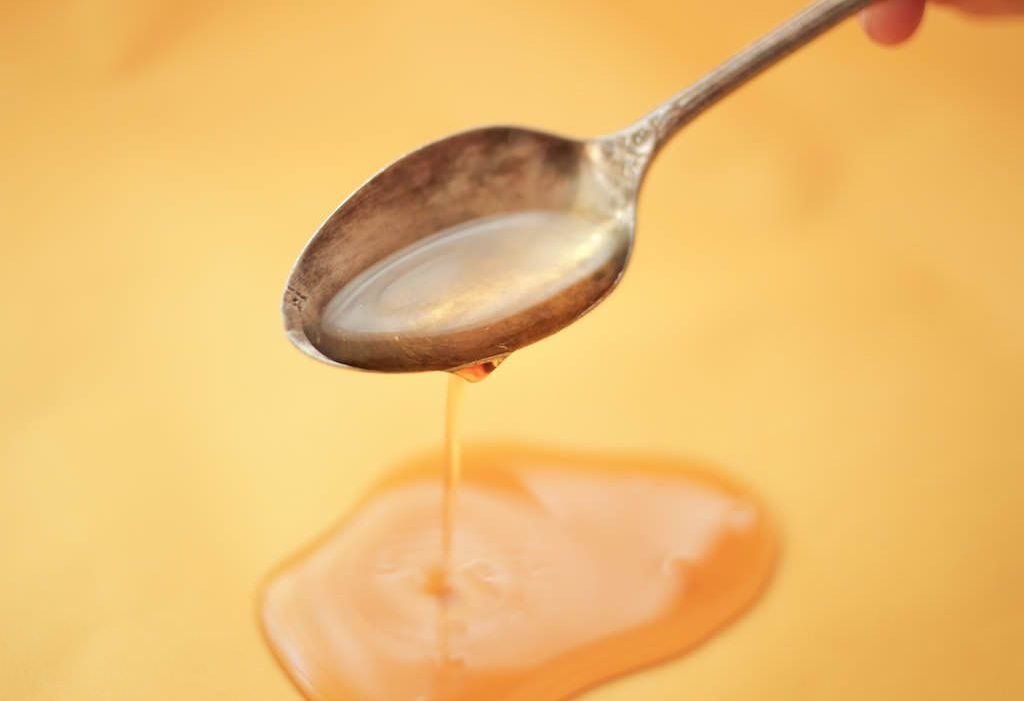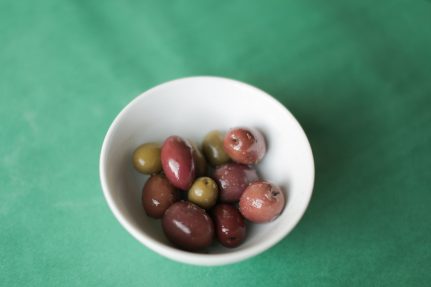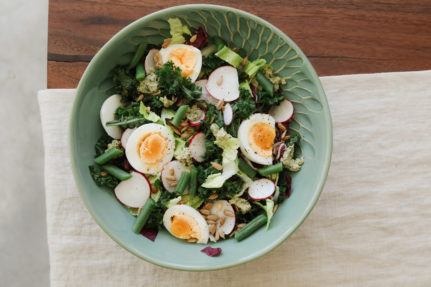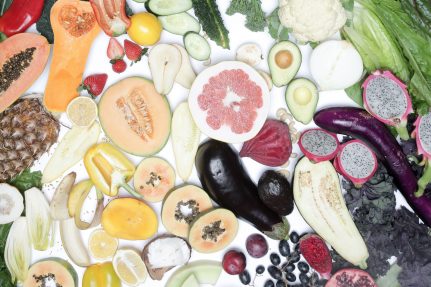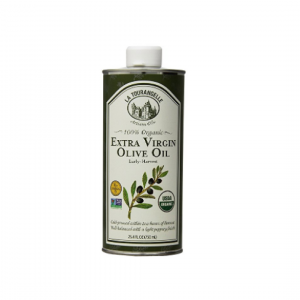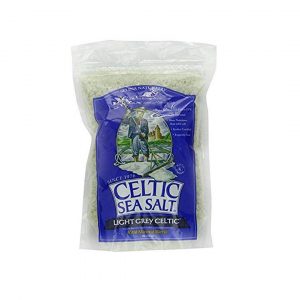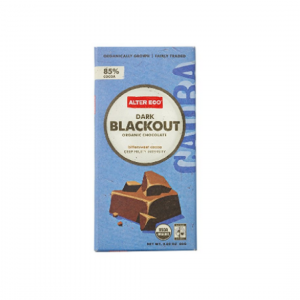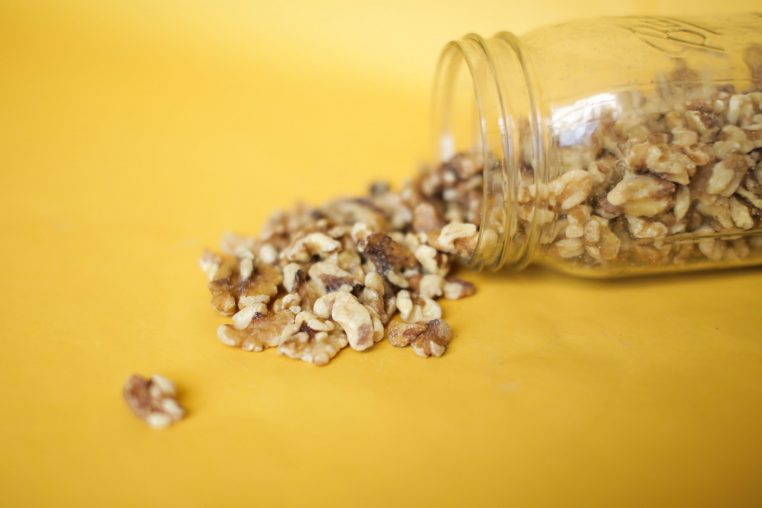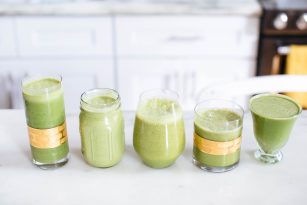Cut some corners on your grocery bill — but not here. Quality matters when it comes to these 5 ingredients you shouldn’t skimp on.
You know the familiar scene; you’re at the grocery store and you’re scanning for the best deal on all of your pantry and fridge staples. As you see the prices, you steer for the mid-range or maybe lowest-priced item. Sure, you might save a few dollars on your total bill, but are you reaping the maximum health benefits? Not all ingredients are created equal, and some are nutrient-dense ingredients, specifically, are not the ones you want to skimp on.
Mostly everyone would agree that they want the most nutrients for their dollar when they’re grocery shopping. That’s why it’s important to know which foods are worth splurging on. Consider nutrient density first, and then strategize about your available options. Your body will thank you! This list below shows 5 quality ingredients you shouldn’t skimp on if you can avoid it. They’re rich in nutrients, incredibly versatile, and they all can go a long way in your dishes at home. No fillers, no preservatives, no additives; just good quality food. Let’s begin.
5 Quality Ingredients You Shouldn’t Skimp On
1. Extra Virgin Olive Oil
Olive oil is an incredible oil — it’s full of healthy fats, loaded with antioxidants and anti-inflammatory properties, and can help protect you from heart disease, (1) and obesity. (2) Studies also show its potential to decrease your risk of cancer, (3)(4)(5) diabetes, (6) and Alzheimer’s, (7) and more. It’s an easy — and delicious — ingredient to incorporate into your diet.
“Extra virgin” is the top grade of olive oil and the one to look for. The term, established by the International Olive Council and the United States Department of Agriculture, is the standard that the oil has zero defects and greater than zero fruitiness. (8) In 2011, we learned that a lot of our oil that claims to be “extra virgin” is actually not. A study by the University of California-Davis Olive Center found 69% of imported olive oil and 10% of olive oil from California that was labeled “extra virgin” did not meet the international standards for the claim. (8)
So how can you tell how pure your olive oil is? Unfortunately, you can’t tell just by looking at it — your olive oil may be cut with another processed seed oil, an older sample of extra virgin olive oil, or a lower grade. Some producers are now noting their quality with seals and logos on the products. If possible, try to purchase it directly from a local manufacturer. I realize that’s difficult sometimes, so I also suggest looking for a “100% Certified Extra Virgin” seal from California-made oils and a red circular logo with a green olive branch that was created by the North American Olive Oil Association or even a “100% Qualita Italiana” placed on authentic oils from Italy.
2. Vinegar
Vinegar has served as a way to preserve food and as a condiment in the human diet for centuries. In fact, its production dates back at least to 200 BC. (9) Thanks to its beneficial health effects, it’s also been used as a remedy in many cultures. Vinegar contains polyphenols, micronutrients, and other bioactive compounds that offer antioxidative, antimicrobial, antidiabetic, and antiobesity effects. (10)
Vinegar is an ingredient you don’t want to skimp on — it plays a big role in transforming dishes. It has the ability to play up savory flavors, balance fattiness, intensify sweetness, and even cut through saltiness.
Whether it’s rice vinegar, balsamic vinegar, red or white wine vinegar, or apple cider vinegar, it’s a great addition to your diet. The best vinegar will just include its original ingredient — wine, beer or rice — and will be fermented in water. Pure balsamic vinegar will be labeled “Aceto Balsamico Tradizionale” and has a D.O.P. stamp. This sign will guarantee that it was produced in Modena and Reggio Emilia, Italy. This article is an excellent resource for all of the other types of vinegar.
3. Maple Syrup
Maple syrup is a nice natural source of sweetness and can be a great “binder” in vegan desserts. It’s important to note that it is still, in fact, sugar, and should be consumed in moderation. However, maple syrup has a lower glycemic index than table sugar, so it can be assumed that it’s slower in raising blood sugar levels.
As we share in the Food Index, maple syrup is a delicious, thick, and sticky syrup made from the sap of a maple tree — a variety of maple trees. It has a rich brown color with a tint of red which varies from the different food grading of maple syrup. Not every syrup is actually maple. Whenever you eating “Pancake Syrups” or Breakfast Syrups”, you’re actually not getting any maple syrup! It’s usually made of high fructose corn syrup and flavored with additives to make it look and smell like the real thing.
Good quality maple syrup can come with a high price tag. Keep in mind that quality is important, though. Its expensive prices are due to the sustainability of the industry; it typically takes 40 gallons of sap to make 1 gallon of syrup!
Canada produces more than 80% of the world’s maple syrup. (11) With these variations, there are 3 grades: Canada #1, #2 Amber and #3 Dark. In the US, we grade maple syrup into either A or B. Grade A can be divided into three other categories: light, medium, or dark amber. Grade A typically has a lighter taste than Grade B. Grade B is rich, thick, and has a bold maple flavor and is typically used in baking or cooking.
4. Animal Foods like Eggs, Fish and Meat
While I like to emphasize a plant-based diet that’s rich in whole foods, animal foods like eggs, fish, and meat play their parts in delivering important nutrients and great flavor. When purchasing these ingredients, it’s important to choose high-quality, ethically-raised options. I always recommend buying locally whenever possible, and looking for antibiotic-free chicken, organic and “pastured” eggs, wild-caught fish, and grass-fed beef.
- Chicken — Chicken is a great source of protein. High-quality chickens are humanely raised free of antibiotics, they have room to range freely, they have access to plenty of natural light, and they’re not bred to be unnaturally large. Conventional farming that doesn’t meet these high standards results in chicken that doesn’t taste as good, lacks essential nutrients, and can even lead to hormone disruption. (12)
- Eggs — Eggs are incredibly nutrient-dense. Think all of the nutrients that it takes to make a baby chicken! That being said, there are a LOT of buying options when it comes to eggs. Keeping it short and sweet, look for “pastured” if you can. That means the chickens actually live outdoors, versus having “access” to the outside world. “Cage-free” doesn’t always mean cruelty-free.
- Fish — Salmon and other fatty fish are great dietary sources of omega-3’s, fatty acids that have been studied to lower the risk of cardiovascular disease. (13) While omega-3’s are found in every kind of fish, they’re higher in salmon because they store the oils in their muscles. (14) Farmed salmon typically contains much higher concentrations of contaminants than wild-caught salmon. (15)(16)(17)
- Beef — Beef is another great source of protein. Organic, grass-fed meat has a healthier ratio of fatty acids and higher levels of essential nutrients. (18) These healthy fats have been associated with a lowered risk of heart disease, cancer as well as healthier cholesterol. Organic grass-fed milk and meat contain a healthier fatty acid composition, with higher amounts of omega-3 and CLA, and higher levels of essential minerals and antioxidants. When buying grass-fed beef, prioritize local farmers, and look for logos and seals like the American Grassfed seal or “100% Grassfed Certification”.
5. Nuts
Nuts can get pricey — fast. However, the raw, unsalted variations are always worth the splurge. Walnuts and almonds, especially, are great sources of heart-healthy fats, protein, and omega-3’s. Nuts easily provide nice texture, flavor and added nutrients to a variety of dishes. They make great, quick snacks on the go.
Commercially-seasoned and flavored nuts contain additives and fillers that you just don’t need! When you buy them raw and unroasted, you’re ensuring that all you’re getting is the original nut itself. It’s important to note that roasting nuts could potentially damage the nutrient density in nuts. (19)(20)
Learn more about these delicious little powerhouses and ways to enjoy them in the Food Index.
References
- Rees, Hartley, Flowers, Clarke, Hooper, Thorogood, Stranges. (August 2013). ‘Mediterranean’ dietary pattern for the primary prevention of cardiovascular disease.
- Schröder, Marrugat, Vila, Covas, Elosua. (Dec 2004). Adherence to the traditional Mediterranean diet is inversely associated with body mass index and obesity in a Spanish population.
- Solanas, Grau, Moral, Vela, Escrich, Escrich E. (May 2010) Dietary olive oil and corn oil differentially affect experimental breast cancer through distinct modulation of the p21Ras signaling and the proliferation-apoptosis balance.
- Trichopoulou, A., Lagiou, P., Kuper, H., & Trichopoulos, D. (2000, September). Cancer and Mediterranean dietary traditions.
- Corominas-Faja, Cuyàs, Lozano-Sánchez, Cufí, Verdura, Fernández-Arroyo, Borrás-Linares, Martin-Castillo, Martin, Lupu, Nonell-Canals, Sanchez-Martinez, Micol, Joven, Segura-Carretero, Menendez (February 2018). Extra-virgin olive oil contains a metabolo-epigenetic inhibitor of cancer stem cells.
- Alkhatib, Tsang, Tiss, Bahorun, Arefanian, Barake, Khadir, Tuomilehto. (Dec 2017). Foods and Lifestyle Approaches for Diabetes Prevention and Management.
- Miranda, Gómez-Gaete, Mennickent. (April 2017). Role of Mediterranean diet in the prevention of Alzheimer disease.
- Frankel, E. N.; Mailer, R. J.; Wang, S. C.; Shoemaker, C. F.; Guinard, J.-X.; Flynn, J. D.; Sturzenberger, N. D. (April 2011). Evaluation of Extra-Virgin Olive Oil Sold in California.
- Mas, A., Torija, M. J., García-Parrilla, M. D., & Troncoso, A. M. (2014). Acetic Acid Bacteria and the Production and Quality of Wine Vinegar.
- Ho, C. W., Lazim, A. M., Fazry, S., Zaki, U. K., & Lim, S. J. (2017, April 15). Varieties, production, composition and health benefits of vinegar: A review.
- Agriculture and Agri-Food Canada; Government of Canada. (2016, October 25). Statistical Overview of the Canadian Maple Industry – 2015.
- Ahmad, S., Ahmed, I., Haider, S., Batool, Z., & Ahmed, S. B. (2017, January). Daily consumption of commercial chicken feed and meat lead to alterations in serum cholesterol and steroidal sex hormones in female rats.
- Bowen, K. J., Harris, W. S., & Kris-Etherton, P. M. (2016). Omega-3 Fatty Acids and Cardiovascular Disease: Are There Benefits?
- Washington State Department of Health. Farmed Salmon Vs. Wild Salmon.
- Foran, J. A., Good, D. H., Carpenter, D. O., Hamilton, M. C., Knuth, B. A., & Schwager, S. J. (2005, November 01). Quantitative Analysis of the Benefits and Risks of Consuming Farmed and Wild Salmon | The Journal of Nutrition | Oxford Academic.
- Hites, R. A., Foran, J. A., Schwager, S. J., Knuth, B. A., Hamilton, M. C., & Carpenter, D. O. (2004, October 01). Global assessment of polybrominated diphenyl ethers in farmed and wild salmon.
- Jacobs, M. N., Covaci, A., & Schepens, P. (2002, July 01). Investigation of selected persistent organic pollutants in farmed Atlantic salmon (Salmo salar), salmon aquaculture feed, and fish oil components of the feed.
- Daley, C. A., Abbott, A., Doyle, P. S., Nader, G. A., & Larson, S. (2010). A review of fatty acid profiles and antioxidant content in grass-fed and grain-fed beef.
- Altan, A., McCarthy, K. L., Tikekar, R., McCarthy, M. J., & Nitin, N. (2011, March). Image analysis of microstructural changes in almond cotyledon as a result of processing.
- Alamprese, Ratti, Rossi. (May 2009). Effects of roasting conditions on hazelnut characteristics in a two-step process.
Additional Resources
- Where — and how — to buy top-quality extra virgin olive oil, The Washington Post
- The Health Benefits of Vinegar, US News Health
- The Best Balsamic Vinegar You Can Buy at the Grocery Store, Bon Appetit
- A Guide To Where Your Vinegar Comes From, And How To Use It, Huffington Post
- 5 Things You Need to Know About Maple Syrup, Consumer Reports
- What’s the Difference Between Wild-Caught and Farm-Raised Salmon? Bon Appetit
- Finding omega-3 fats in fish: Farmed versus wild, Harvard Health
- How to Buy the Best Eggs Possible, Bon Appetit
Let’s Hear It
Was this list helpful? Which foods do you always find yourself splurging on? Keep the conversation going by leaving a comment below for the rest of the community to see — and connect with NS on Instagram @nutritionstripped #nutritionstripped

